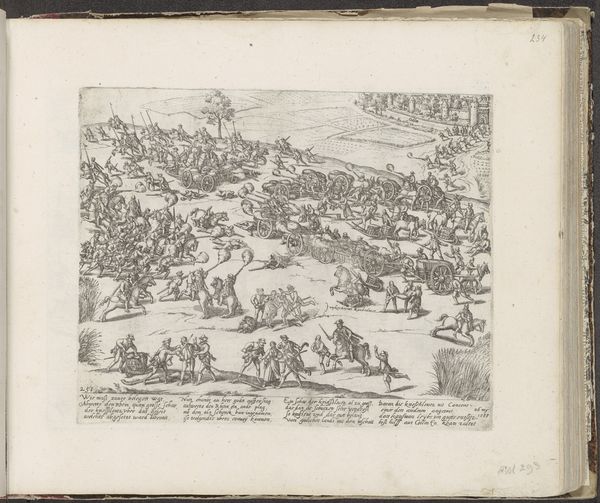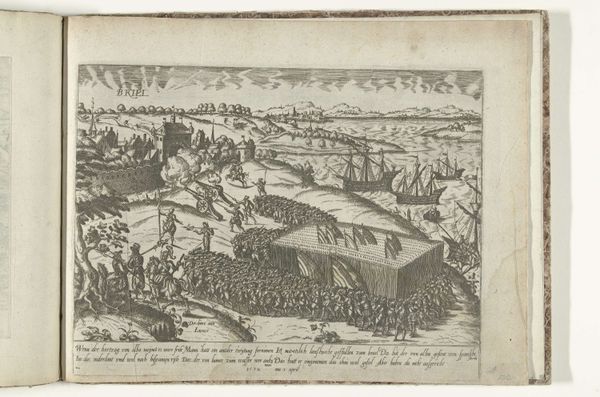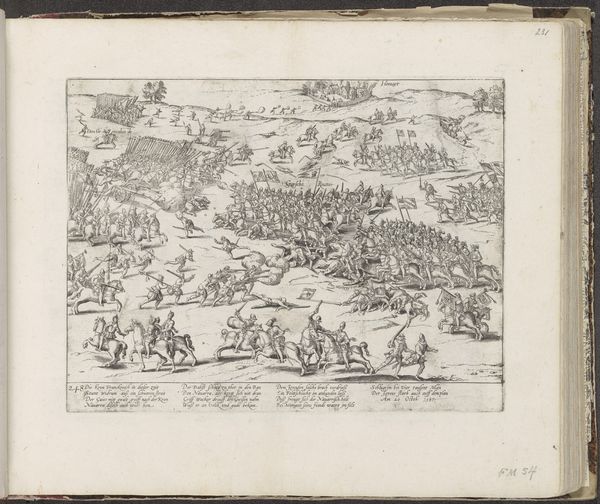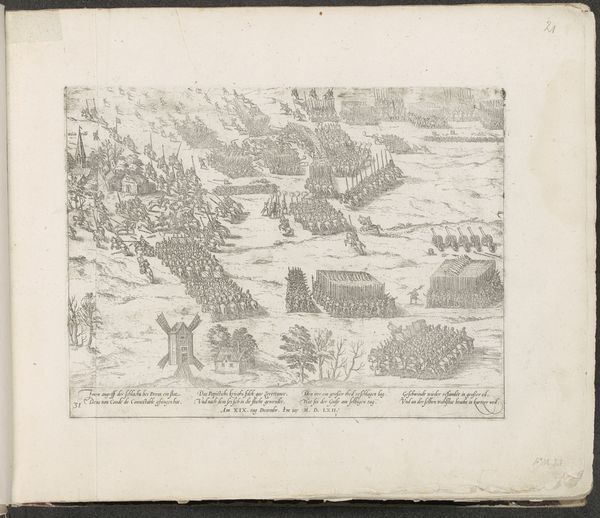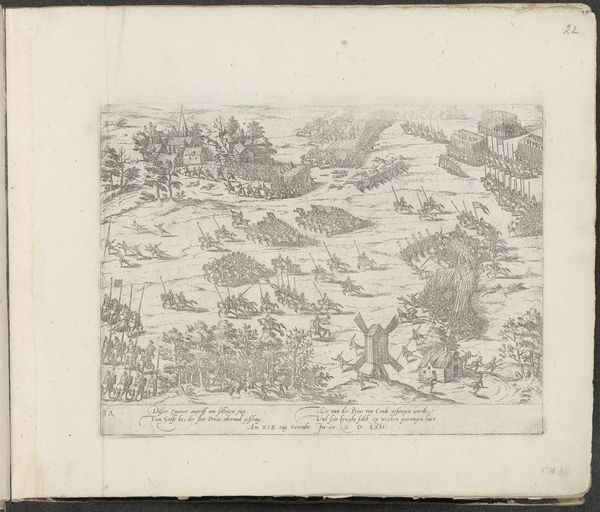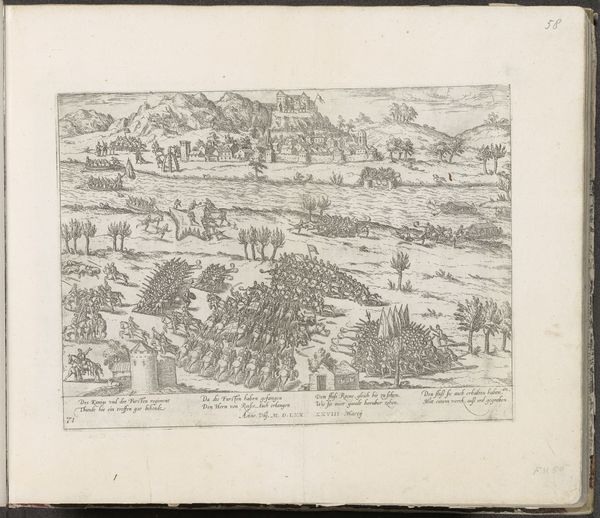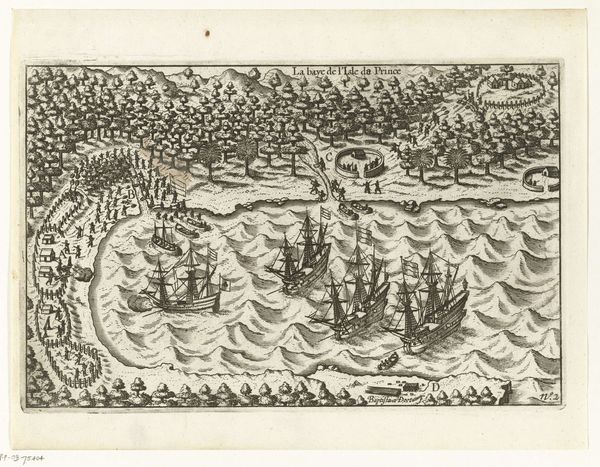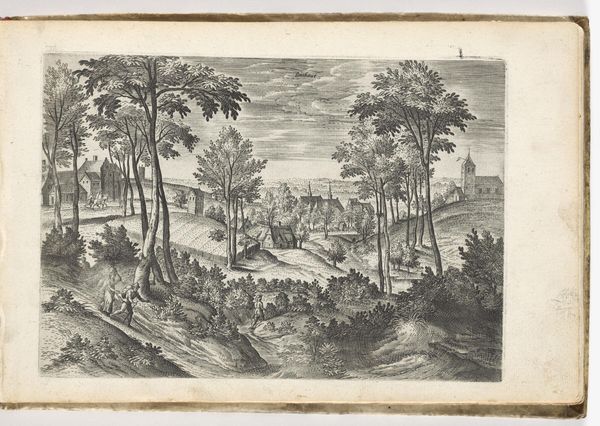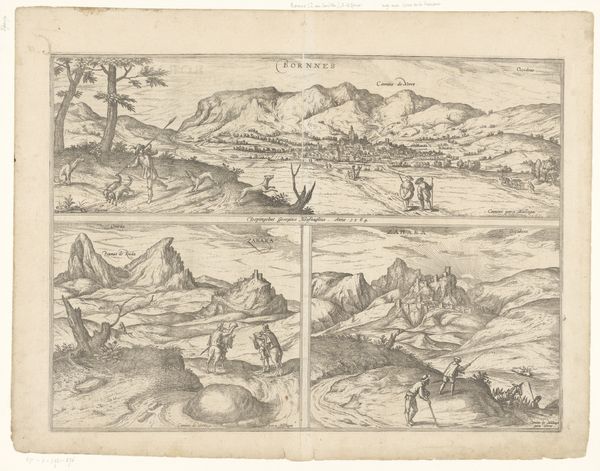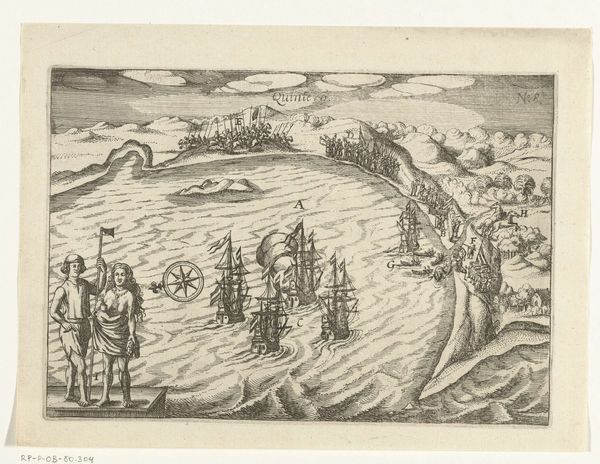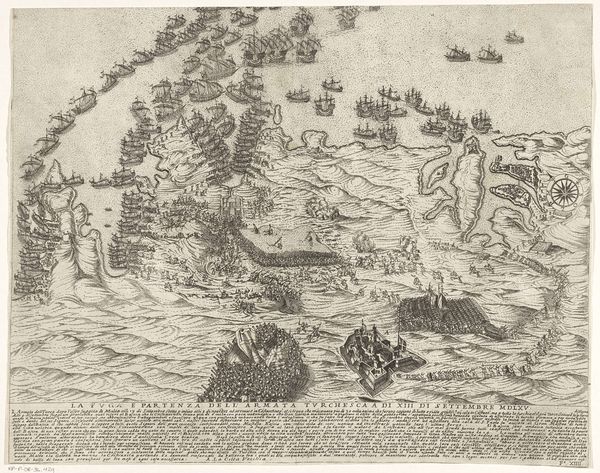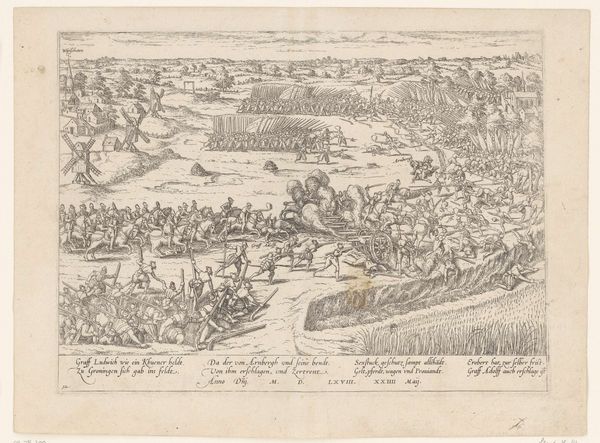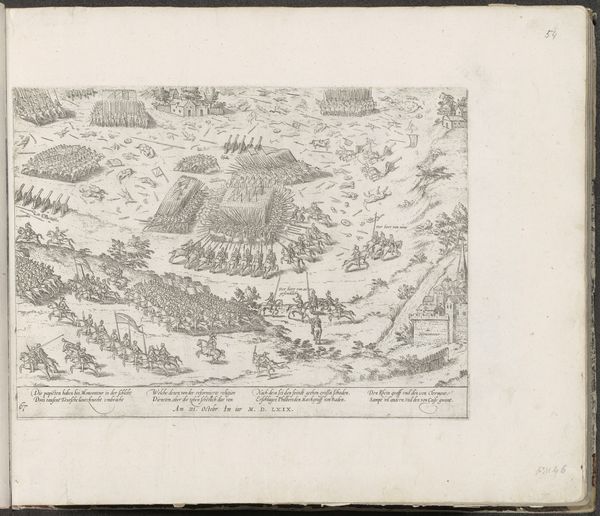
print, engraving
# print
#
landscape
#
mannerism
#
history-painting
#
engraving
Dimensions: height 312 mm, width 478 mm
Copyright: Rijks Museum: Open Domain
Jean Perrissin created this print, "Slag bij de Rhône," in 1570 using etching, a printmaking technique with a long and fascinating history. It’s essentially a chemical process of mark-making. The lines you see were first drawn with a needle through a waxy ground applied to a metal plate, likely copper. The plate was then exposed to acid, which bit into the metal where the ground had been removed, creating incised lines. After cleaning, the plate would be inked, and then printed onto paper. The pressure of the printing process accounts for the slightly embossed quality around the lines. Printmaking has always been a potent medium for circulating ideas widely, making it an ideal tool during the religious wars of the 16th century. Consider the labor involved: not only the artist's skill but also the hands that prepared the materials, operated the printing press, and distributed the finished prints. These prints, therefore, are a powerful reminder of how art is always embedded in broader economic and social systems.
Comments
No comments
Be the first to comment and join the conversation on the ultimate creative platform.

